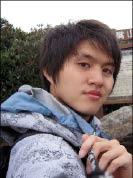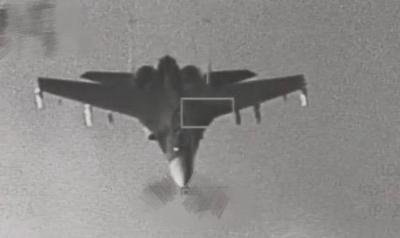Family members of Chang Po-wei (張博崴), a student at Chung Shan Medical University who died in a mountain climbing accident, yesterday accused the government of ineffective rescue efforts.
After 51 days of searching by local police, fire department, the military, volunteer civil rescue teams and teams hired by family members, Chang’s body was found near Beigang River (北港溪) in Yunlin County last week by two mountain climbers — two days after they launched their own search for the missing student.
Chang’s parents said their son had died in the mountains because the government did not use the GPS on their son’s cellphone to locate him.

Photo: Lin Chun-hung, Taipei Times, courtesy of Chang Po-wei’s family
They said they were mulling the possibility of seeking state compensation.
Chang’s mother said a medical examiner had determined that her son probably died five or six days before he was found. Her son was a good swimmer and the family had requested that rescue teams search near or at a river valley, she said.
RECOUNTING PROCESS
After her son’s disappearance, the commander of the rescue mission asked her if her son had gotten in a dispute with her or his girlfriend and could have been hiding, Chang’s mother said.
For their part, police initially refused their request to obtain detailed records of their son’s cellphone, stating requirements to respect personal information and privacy.
That, she said, cost additional rescue time.
GOING SOLO
Chang had set out to climb Baigu Mountain (白姑大山) on his own on Feb. 28.
At about 3:30pm on the second day, Chang’s girlfriend received a phone call from him saying he was lost, but believed he could find his way out. She lost contact with him after half an hour.
Chang’s family reported the matter to the police the same night.
His body was found close to where his parents and girlfriend had expected him to be.
Huang Kuo-shu (黃國書), the mountain climber who found the body, had called Chang’s girlfriend last week and asked her to confirm her hearing the sound of running water during her last conversation with Chang.
Huang tracked footprints and folded tree branches close to the river valley and described what looked like a tent in the vicinity. After climbing down 600m and crossing deep water and waterfalls, Huang found Chang’s body rolled in his sleeping bag, with his half-erected tent and backpack nearby.
Bloodstains on Chang’s pants led Huang to conclude that Chang may have injured himself after falling into the valley, forcing him to wait to be rescued.
‘PROFESSIONAL’ HELP
Chang’s father said that while the police and fire departments sent out teams of four people to search for three days, they limited their search to mountain trails.
Police told him they did not have ropes that were long enough to go down the valley, he said, while the military suspended searches whenever it rained or fogged.
After Chang’s body was found, the teams hired by the family to look for their son changed their explanations, saying they did not have the equipment to go down the valley, he said.
If all the teams involved had acted more professionally, his son would probably have been saved rather than waiting to die in his sleeping bag, the father said.
Chang’s parents said they were grateful for the civilian rescue teams’ efforts, but were angry at the government’s rescue plans and urged it to adopt stricter regulations on mountain climbing.

Trips for more than 100,000 international and domestic air travelers could be disrupted as China launches a military exercise around Taiwan today, Taiwan’s Civil Aviation Administration (CAA) said yesterday. The exercise could affect nearly 900 flights scheduled to enter the Taipei Flight Information Region (FIR) during the exercise window, it added. A notice issued by the Chinese Civil Aviation Administration showed there would be seven temporary zones around the Taiwan Strait which would be used for live-fire exercises, lasting from 8am to 6pm today. All aircraft are prohibited from entering during exercise, it says. Taipei FIR has 14 international air routes and

The Ministry of National Defense (MND) today released images of the military tracking China’s People's Liberation Army (PLA) movements during the latest round of Chinese drills around Taiwan. The PLA began "Justice Mission 2025" drills today, carrying out live-fire drills, simulated strikes on land and maritime targets, and exercises to blockade the nation's main ports. The exercises are to continue tomorrow, with the PLA announcing sea and air space restrictions for five zones around Taiwan for 10 hours starting from 8:30am. The ministry today released images showing a Chinese J-16 fighter jet tracked by a F-16V Block 20 jet and the

Snow fell on Yushan (Jade Mountain, 玉山) yesterday morning as a continental cold air mass sent temperatures below freezing on Taiwan’s tallest peak, the Central Weather Administration (CWA) said. Snowflakes were seen on Yushan’s north peak from 6:28am to 6:38am, but they did not fully cover the ground and no accumulation was recorded, the CWA said. As of 7:42am, the lowest temperature recorded across Taiwan was minus-5.5°C at Yushan’s Fengkou observatory and minus-4.7°C at the Yushan observatory, CWA data showed. On Hehuanshan (合歡山) in Nantou County, a low of 1.3°C was recorded at 6:39pm, when ice pellets fell at Songsyue Lodge (松雪樓), a

City buses in Taipei and New Taipei City, as well as the Taipei MRT, would on Saturday begin accepting QR code payments from five electronic payment providers, the Taipei Department of Transportation said yesterday. The new option would allow passengers to use the “transportation QR code” feature from EasyWallet, iPass Money, iCash Pay, Jkopay or PXPay Plus. Passengers should open their preferred electronic payment app, select the “transportation code” — not the regular payment code — unlock it, and scan the code at ticket readers or gates, General Planning Division Director-General Liu Kuo-chu (劉國著) said. People should move through the